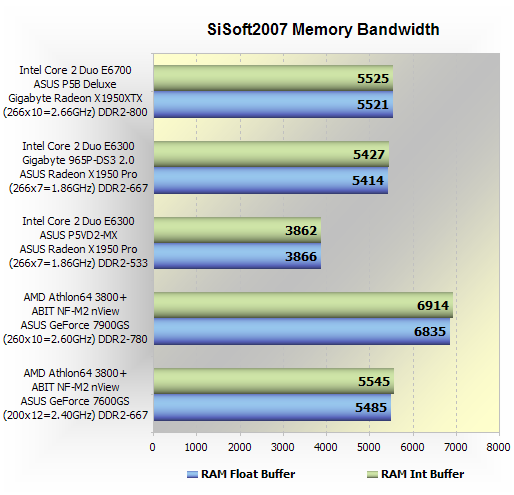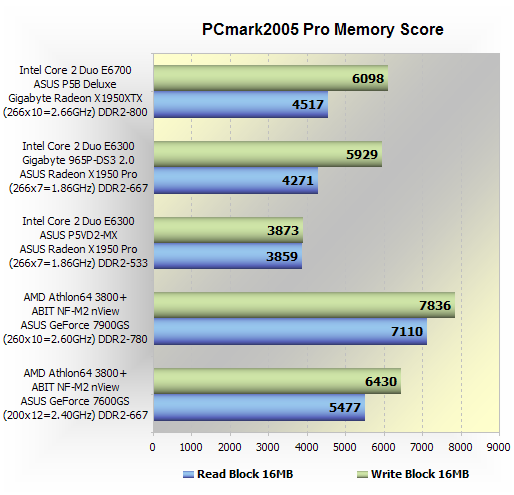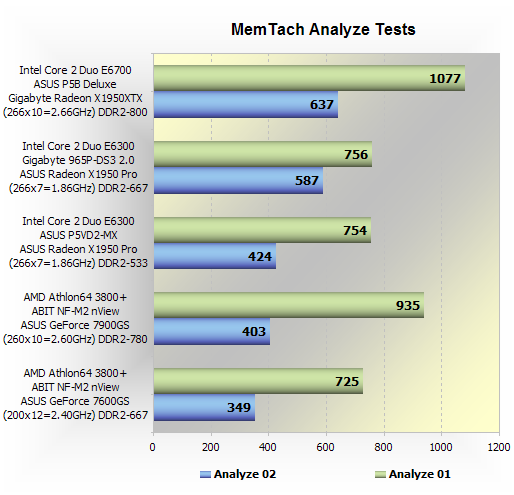Memory Performance
|
AMD Athlon64 3800+ (AM2) - Microsoft Windows XP Pro (SP2) - Nvidia Forceware (91.47) - Nvidia nForce4 430 (8.22) |
Intel Core 2 Duo E6700 (LGA775) - Microsoft Windows XP Pro (SP2) - ATI Catalyst (6.11) - Intel System Drivers (7.2.2) |
Core 2 Duo $1000 gaming system!
- Intel Core 2 Duo E6300 (1.86GHz) LGA775
- OCZ Gold Series 1GB (2x512MB) DDR2-533
- ASUS P5VD2-MX (VIA P4M890)
replaced by "Gigabyte 965P-DS3 2.0" because
of poor performance!
- Samsung SpinPoint T 400GB 7200RPM (Serial ATA II)
- ASUS Radeon X1950 Pro (256MB)
Software
- Microsoft Windows XP Pro (SP2)
- ATI Catalyst 6.11
- Intel System Drivers (7.2.2)



The memory performance is not all that important given the fact that the Athlon64 3800+ is able to equal the memory bandwidth of the much faster Core 2 Duo E6700. However, when the E6300 produces 5.4GB/s on one motherboard and then just 3.8GB/s on another, you know there is a problem, so where?
The problem lied on the VIA chipset not supporting dual-channel DDR2 memory. Although the ASUS P5VD2-MX is an incredibly cheap motherboard, we re-evaluated the situation and felt that spending almost three times more on the Gigabyte 965P-DS3 2.0 motherboard was a much wiser choice. As you can see, in terms of memory bandwidth the 965P-DS3 2.0 is a far superior motherboard.